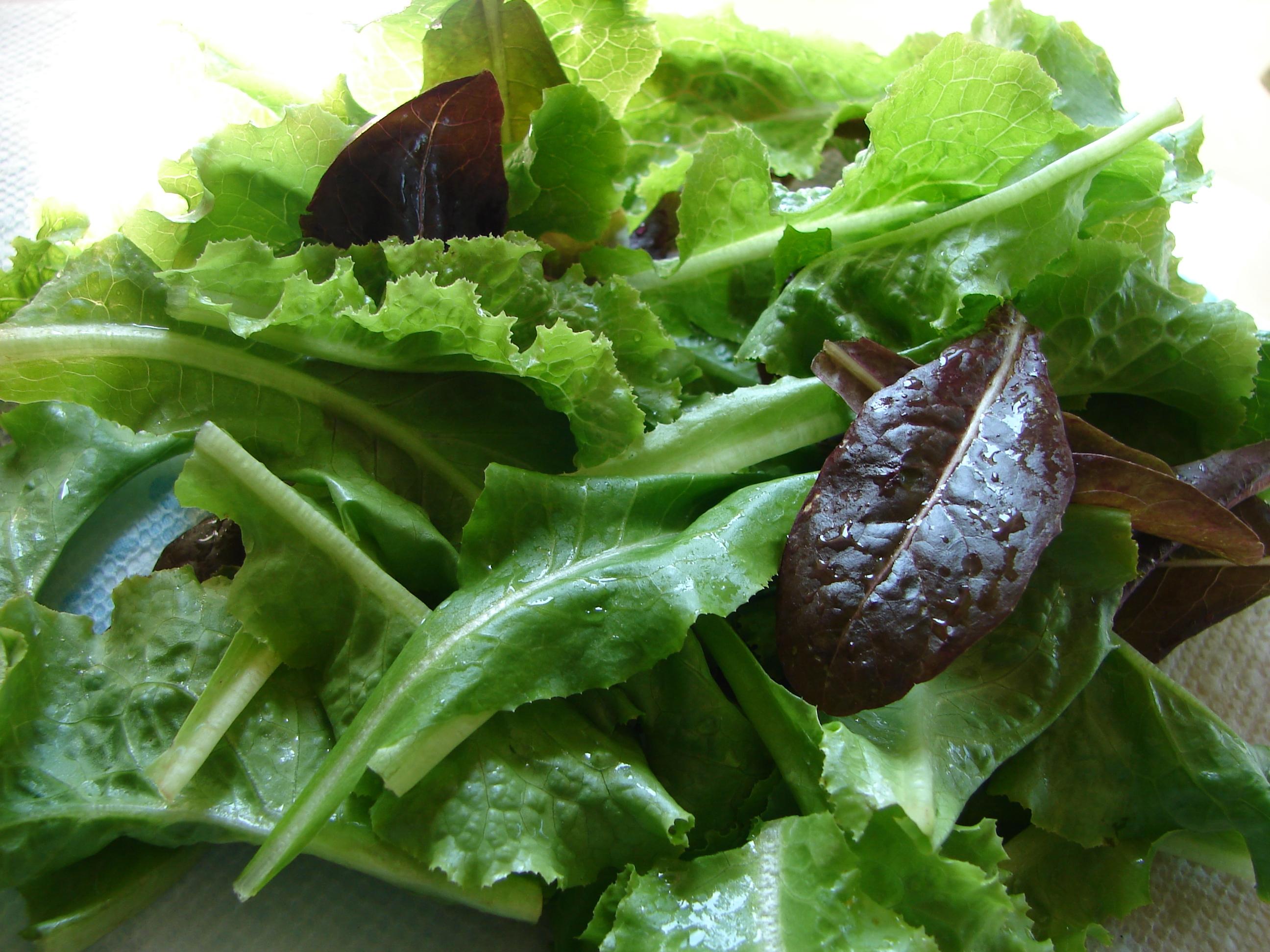We’ve all purchased those handy bags of salad mix at the grocery store, with the usual blend of iceberg lettuce, carrot shreds, and red cabbage. There’s something to be said for convenience and time-saving, but what if you could step right outside your door and find a perfect blend of salad greens that taste even better than any packaged mix?
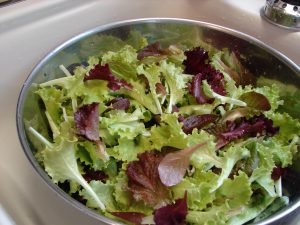
Freshly Picked Greens
A lot of gardeners hesitate to try new greens, not sure which ones will taste best together. Thankfully there are seed mixtures available that make choosing the varieties a breeze! There are mild mixes of lettuce, tangy blends with mustard greens, and gourmet combinations including herbs like chervil and cilantro.
But if you know what the different greens taste like, you can pick your favorites to grow individually. Creating your own salad garden is easy! Use a half barrel or a 15 to 18-inch planter filled with potting soil. Sprinkle the seeds over the surface, trying to keep them 1/2 to 1-inch apart. Cover with 1/4-inch of soil and water gently. Keep evenly moist. In just 4 weeks, your greens should be ready for their first cutting!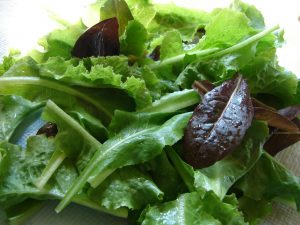
To properly harvest your salad greens, hold a cluster of leaves in one hand and cut them 1/2-inch above the soil with a sharp knife or scissors. The plant will begin to grow new leaves right away. In 2 weeks there will be another harvest! You should get 4 cuttings from the same planting.
Creating your own signature salad combination can be easy when you use this guide to help select the greens that you’ll love!
To purchase seeds or learn more about each variety, click on the underlined link!
Arugula – This variety is very well known, and makes a wonderful base for any salad. The leaves are more peppery than bitter, and can also be harvested quite small for baby greens.
Baby Beet Greens – When thinning your rows of beets, don’t toss those tops! Immature beet greens are tender and slightly spicy. The bright red veining makes a colorful addition to salads.
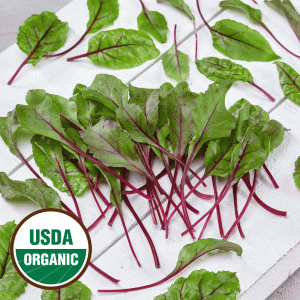
Beet Greens
Baby Kale – When picked very small, baby kale leaves are tender and sweet.
Butterhead Lettuce – Boston and Bibb lettuce are two common types. The leaves are soft and smooth textured.
Cilantro – An herb that’s well known to many, cilantro is a member of the dill family and has a pungent flavor.
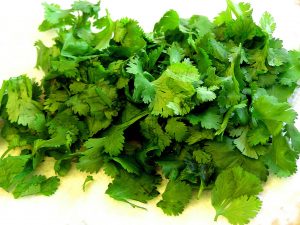
Cilantro Leaves
Chervil – This herb has a mild, sweet, licorice-like flavor.
Cress – Watercress is the most popular variety of cress in the US. It has a peppery taste.
Endive –Â These leaves have an oval shape and satiny texture, and make a great addition to a salad. Their scooped spoon-like shape also makes the leaves perfect edible servers.
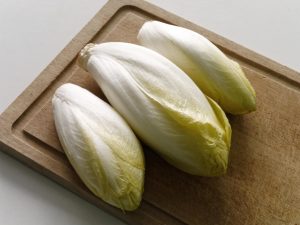
Endive
Escarole – Related to Frisee, this mildly bitter leaf is large and crisp. Often used in Italian cuisine with beans and in soup.
Frisee – (Also known as chicory or curly endive.) These curled leaves are slightly bitter with a crunchy stem. For baby greens, simply harvest individual leaves once they’re big enough to eat.
Looseleaf Lettuce – Leaf lettuce has a very mild flavor, and its uneven ruffled surface adds lots of texture to a salad.
Mache – (Also called corn salad or lamb’s lettuce) This plant has small leaves and adds a mild, slightly sweet flavor to a salad.
Mibuna – (also called Japanese Greens). This exotic green has a more pungent flavor than your typical greens, but the flavor won’t overpower a dish. The leaves have a pretty scalloped edge similar to oak leaves.
Oakleaf Lettuce – This loose-leaf lettuce has a shape similar to oak leaves. It has a delicate, tender flavor.
Radicchio – This deep reddish-purple vegetable can be a compact head similar to cabbage, or a more elongated shape like its cousin, endive. It can be served cooked as well, making it much sweeter.
Romaine – This large leafy lettuce has a nice crunch and is the type originally used when the Ceasar Salad was invented. The red variety adds a punch of color to salads!
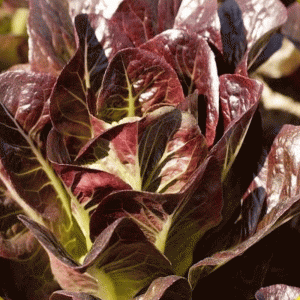
Red Romaine
Tatsoi – Another Asian green, the small rounded leaves have a mild flavor. The texture is similar to baby spinach.
Copyright 2018 Everwilde Farms

